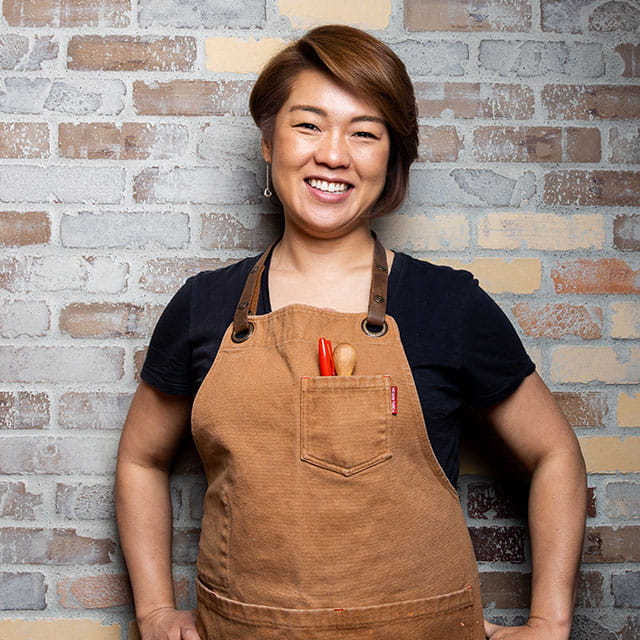
Chef Jinhee Lee
We stopped by Jin Bar to hear more of her incredible journey towards becoming Calgary’s Korean comfort go-to. View Culinary Connections for more.
Read BioA graduate of New York’s Culinary Institute of America and long-time Georgia resident, Chef Parnass Lim Savang was tired of from-a-can Thai cuisine he found himself surrounded by.
Now, within Atlanta’s Candler Park, Chef Savang runs Talat Market, a pop-up specializing in Georgian Thai, combining locally-grown ingredients, house-made bases and authentic Thai techniques.
We spoke with Chef Savang to find out more about his family-sparked influence, flavour process and the Georgian impact on the Thai side of cuisine.
At Talat Market, your goal has been to serve traditional Thai dishes comprised of Georgian ingredients. What sparked your inspiration for this style of menu?
The inspiration started when I was a kid; eating meals with my parents at home, dining at their restaurant and what I ate during my trips to Thailand. With the Thai cuisine, there was always a sense of community and sharing. The meals usually consisted of fresh rice and individual dishes of curry, soup, salad, relish, stir fry vegetables, grilled meats or steamed whole fish but they all complimented each other.
I searched far and wide for this concept in Georgia but returned disappointed so I stepped up and made it available in Atlanta myself. Using both my heritage as a Thai-American and my overall culinary experience as a guide, I’ve coined this style of cuisine as Georgian Thai as it’s the best of both worlds.
Share with us your flavour process for merging together authentic Thai and Georgian flavours successfully in terms of ingredients, spices and seasonings.
When I develop dishes, the main profile first has to be Thai and then I fill in the gaps with Georgian ingredients. Take our menu’s laab for example. The traditional version typically has chopped meat, herbs, lime juice, fish sauce and roasted rice powder. In our version, we replace the meat with roasted, flash-fried butternut squash, parsnips and carrots; these are seasonal and locally-sourced in wintery Georgia. We then mix it all together with the rest of traditional laab ingredients. This is surprisingly one of the top dishes people talk about most.
Overall, the majority of the food I cook is not really thought out, it just happens, depending on the season, my pantry and what I’d like to make at the time.
Describe the impact these flavours have on the cooking techniques and methods that you utilize.
Flavours from staple Thai ingredients that I use are historically linked to traditional techniques I try to preserve. For example, the mortar and pestle is the foundational tool of Thai food, great for smashing ingredients into a flavourful paste. These pastes are the foundation of most curry, soup and marinade dishes.
The majority of your ingredients are sourced locally. What is your process for finding substitutes when ingredients are unavailable?
If we don’t have an ingredient, and the lack of would drastically throw off a particular dish’s flavor profile, we opt to not make that dish until the ingredient is available again. For instance, Kanom Jeen Nam Yaa is a fish curry served on fermented rice noodles and requires an ingredient called grachai. This is extremely hard to find fresh in Georgia. We once attempted to make it with local ginger instead but it wasn’t the same so I just remove it until I can have that granchai.
Which new flavours are you experimenting with to take your menu to the next level?
Right now, I’m trialing fermented soy beans packed into a disc, dried and roasted over embers. Once fermented you pound it into a paste, sauce or relish. It’s a very Northern Thai ingredient and with my background being from Bangkok which is located in Central Thailand, I’m having fun experimenting with these new types of ingredients.
The restaurant is in a phase where I can tryout a lot and the only required result is that it obviously needs to taste good. I’m also experimenting with pickled gourami fish, shrimp paste, jackfruit, crickets and starfruit. The weirder the ingredients, the more we want to work with it because the challenge of making something strange taste heavenly is very fun.
Learn more about Chef Parnass Lim Savang.